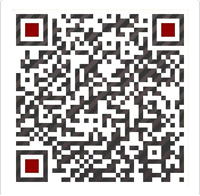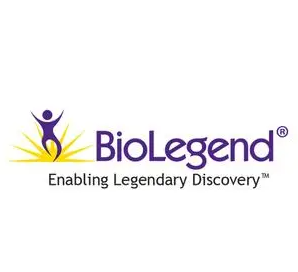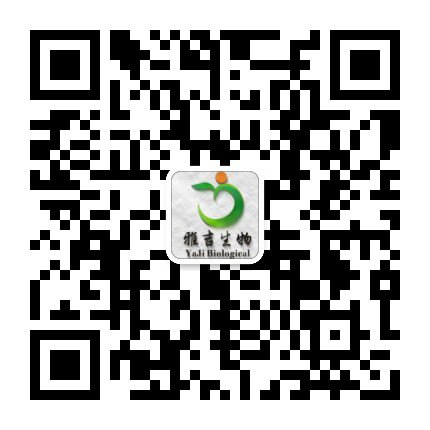1、订购使用抗体产品的客户,在使用产品过程中遇到问题,提出技术支持及其他请求时,我公司接到请求后的24个小时之内做出处理。
2、我公司的所有产品都经过严格的质检后上架销售,如经复核确实存在问题,本公司无条件退款或更换货。
3、所有书面反馈我们收到后48小时内给出答复。
Product Details
- Verified Reactivity
- Human
- Antibody Type
- Monoclonal
- Host Species
- Mouse
- Formulation
- Phosphate-buffered solution, pH 7.2, containing 0.09% sodium azide and BSA (origin USA).
- Preparation
- The antibody was purified by affinity chromatography and conjugated with Brilliant Violet 421? under optimal conditions.
- Concentration
- Lot-specific (to obtain lot-specific concentration, please enter the lot number in our Concentration and Expiration Lookup or Certificate of Analysis online tools.)
- Storage & Handling
- The antibody solution should be stored undiluted between 2°C and 8°C, and protected from prolonged exposure to light. Do not freeze.
- Application
-
FC - Quality tested
- Recommended Usage
Each lot of this antibody is quality control tested by immunofluorescent staining with flow cytometric analysis. For flow cytometric staining, the suggested use of this reagent is 5 ?l per million cells in 100 ?l staining volume or 5 ?l per 100 ?l of whole blood.
Brilliant Violet 421? excites at 405 nm and emits at 421 nm. The standard bandpass filter 450/50 nm is recommended for detection. Brilliant Violet 421? is a trademark of Sirigen Group Ltd.
Learn more about Brilliant Violet?.
This product is subject to proprietary rights of Sirigen Inc. and is made and sold under license from Sirigen Inc. The purchase of this product conveys to the buyer a non-transferable right to use the purchased product for research purposes only. This product may not be resold or incorporated in any manner into another product for resale. Any use for therapeutics or diagnostics is strictly prohibited. This product is covered by U.S. Patent(s), pending patent applications and foreign equivalents.- Excitation Laser
- Violet Laser (405 nm)
- Application Notes
The OKT3 monoclonal antibody reacts with an epitope on the epsilon-subunit within the human CD3 complex.
Clone OKT3 can block the binding of clones SK7 and UCHT1.4 The OKT3 antibody is able to induce T cell activation. Additional reported applications (for the relevant formats) include: immunohistochemical staining of acetone-fixed frozen sections and activation of T cells. The LEAF? purified antibody (Endotoxin <0.1 EU/?g, Azide-Free, 0.2 ?m filtered) is recommended for functional assays (Cat. No. 317304). For highly sensitive assays, we recommend Ultra-LEAF? purified antibody (Cat. No. 317326) with a lower endotoxin limit than standard LEAF? purified antibodies (Endotoxin <0.01 EU/?g).- Application References
(PubMed link indicates BioLegend citation) -
- Schlossman S, et al. Eds. 1995. Leucocyte Typing V. Oxford University Press. New York.
- Knapp W. 1989. Leucocyte Typing IV. Oxford University Press New York.
- Barclay N, et al. 1997. The Leucocyte Antigen Facts Book. Academic Press Inc. San Diego.
- Li B, et al. 2005. Immunology 116:487.
- Jeong HY, et al. 2008. J. Leuckocyte Biol. 83:755. PubMed
- Alter G, et al. 2008. J. Virol. 82:9668. PubMed
- Manevich-Mendelson E, et al. 2009. Blood 114:2344. PubMed
- Pinto JP, et al. 2010. Immunology. 130:217. PubMed
- Biggs MJ, et al. 2011. J. R. Soc. Interface. 8:1462. PubMed
- Product Citations
-
- RRID
- AB_2565848 (BioLegend Cat. No. 317343) AB_2565849 (BioLegend Cat. No. 317344)
Antigen Details
- Structure
- Ig superfamily, the subunits CD3γ, CD3δ, CD3ζ (CD247) and TCR (α/β or γ/δ) form the CD3/TCR complex, 20 kD
- Distribution
-
Mature T and NK T cells, thymocyte differentiation
- Function
- Antigen recognition, signal transduction, T cell activation
- Ligand/Receptor
- Peptide antigen bound to MHC
- Cell Type
- NKT cells, T cells, Thymocytes, Tregs
- Biology Area
- Immunology
- Molecular Family
- CD Molecules
- Antigen References
-
- Barclay N, et al. 1993. The Leucocyte FactsBook. Academic Press. San Diego.
- Beverly P, et al. 1981. Eur. J. Immunol. 11:329.
- Lanier L, et al. 1986. J. Immunol. 137:2501.
- Gene ID
- 916 View all products for this Gene ID
- UniProt
- View information about CD3 on UniProt.org








